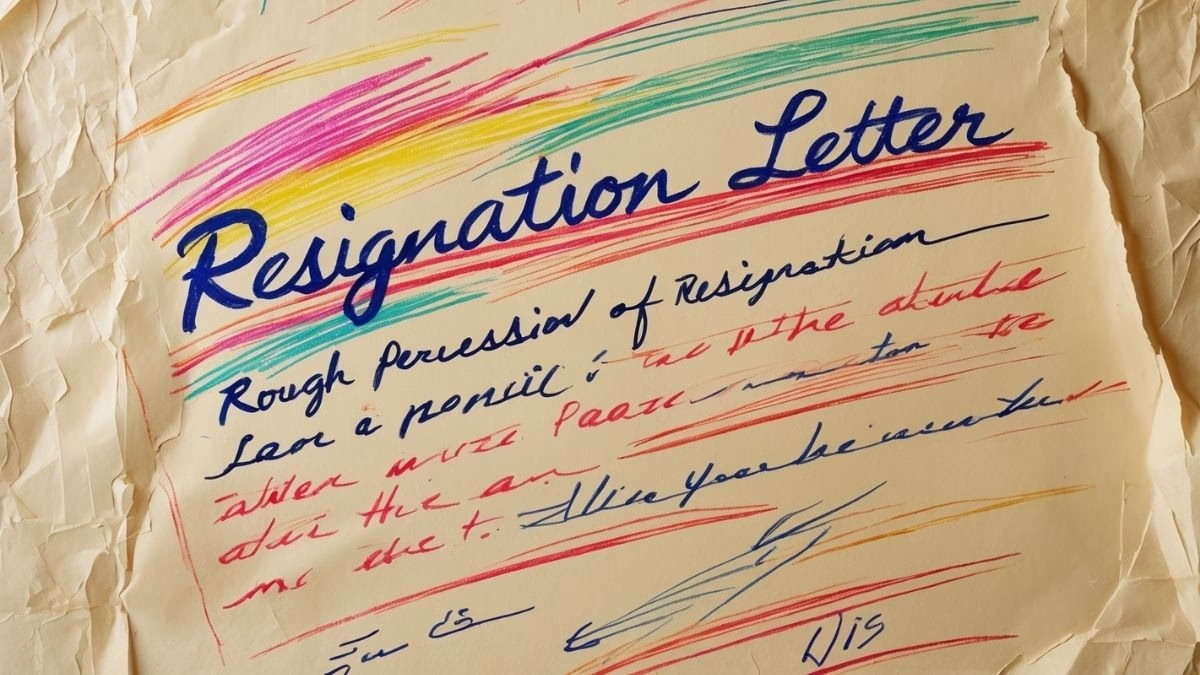How to Approach This Lesson
In this lesson, we’re tackling a very practical and important piece of writing: a resignation letter. This isn’t just about getting the words right; it’s about maintaining a professional relationship. We’ll approach this by first understanding the goal and the key components. Then, we’ll build a letter together, piece by piece, refining it as we go. Pay close attention to the tone and word choice—they’re crucial for this kind of formal writing.
The Challenge: Resigning Gracefully
Our task today is to: Draft a resignation letter due to relocation for personal reasons.
This might seem simple, but it’s a task where professionalism is paramount. You want to leave on good terms, ensure a smooth transition, and protect your professional reputation. The goal is to be clear, concise, and courteous. You don’t need to over-explain, but you do need to provide the necessary information while maintaining a positive tone. This skill of writing formally and directly is essential for many exam tasks, such as writing a formal email or a letter of complaint.
Let’s create a simple, foolproof plan. A standard resignation letter has four main parts:
- The Opening: State your intention to resign and your last day of employment.
- The Reason (Optional but helpful): Briefly and professionally mention the reason for your departure. In our case, it’s relocation.
- The “Thank You”: Express gratitude for the opportunity and mention something positive about your time at the company.
- The Closing: Offer to help with the transition and end with a professional sign-off.
Let’s use this framework to build a perfect resignation letter.
Your Step-by-Step Guide to a Flawless Resignation Letter
Step 1: The Opening – Clear and Direct
[ppp_patron_only level=5]
This is the most important part. There should be no ambiguity. State your purpose immediately. Standard practice is to provide two weeks’ notice, so your last day will be two weeks from the date of the letter.
A Bad Example (Too Vague and Informal):
“So, I’m thinking of leaving soon. I need to quit my job here.”
This is unprofessional and doesn’t provide a specific date. It creates confusion.
A Good Example (Clear and Formal):
“Please accept this letter as formal notification that I am resigning from my position as [Your Job Title] at [Company Name]. My last day of employment will be [Your Last Day, e.g., July 26, 2025].”
This is perfect. It’s direct, includes all necessary information (position, company, last day), and sets a professional tone from the start.
Our First Draft:
[Your Name]
[Your Address]
[Your Phone Number]
[Your Email]
[Date]
[Manager’s Name]
[Manager’s Title]
[Company Name]
[Company Address]
Dear [Manager’s Name],
Please accept this letter as formal notification that I am resigning from my position as Marketing Specialist at Innovate Inc. My last day of employment will be July 26, 2025.
Step 2: The Reason – Brief and Professional
You are not obligated to give a reason, but it can be helpful and prevent speculation. Since our reason is relocation, we can state it simply.
A Common Mistake (Too Much Information):
“I am resigning because my partner got a new job in another city, and it’s a really great opportunity for them, so we decided it would be best for our family to move. We found a nice apartment there already, and the schools are great.”
This is TMI (too much information). Your personal life details are not necessary. Keep it brief and professional.
A Good Example (Brief and to the Point):
“This was not an easy decision, but I have made it due to a planned relocation to a new city for personal family reasons.”
This is polite, professional, and gives a sufficient explanation without oversharing. Let’s add this to our draft.
Our Second Draft (Opening + Reason):
…
Please accept this letter as formal notification that I am resigning from my position as Marketing Specialist at Innovate Inc. My last day of employment will be July 26, 2025.
I have made this decision due to a planned personal relocation.
Step 3: The “Thank You” – Leave on a High Note
Always express gratitude. This shows class and ensures you leave on positive terms. Be specific if you can.
A Bad Example (Insincere or Generic):
“Thanks for everything.”
It’s too casual and sounds dismissive.
A Good Example (Sincere and Specific):
“Thank you so much for the opportunity to have been a part of this team for the past three years. I have truly enjoyed my time at Innovate Inc. and I am particularly grateful for the experience I gained in leading the ‘Project Fusion’ campaign. I’ve learned a great deal, and I value the skills this role has taught me.”
This is specific, warm, and professional. It shows you genuinely valued your time there.
Step 4: The Closing – Offer to Help
Offering to assist with the transition is a standard courtesy. It shows you are a team player right up to your last day.
Let’s combine the “Thank You” and the closing to create our final, polished version.
Final, Polished Version:
[Your Name]
[Your Address]
[Your Phone Number]
[Your Email]
[Date: July 12, 2025]
[Manager’s Name]
[Manager’s Title]
[Company Name]
[Company Address]
Dear [Manager’s Name],
Please accept this letter as formal notification that I am resigning from my position as Marketing Specialist at Innovate Inc. My final day of employment will be July 26, 2025.
I have made this decision due to a planned personal relocation.
Thank you for the opportunity to have worked here for the past three years. I have genuinely valued my time at Innovate Inc. and am especially grateful for the skills I’ve developed and the experience I gained while leading the Project Fusion campaign.
I am dedicated to ensuring a smooth transition during my final two weeks. Please let me know how I can be of assistance, whether it is training my replacement or documenting my current projects.
I wish you and the company all the best for the future.
Sincerely,
(Signature)
[Your Typed Name]
This letter is perfect. It’s professional, gracious, clear, and provides a smooth exit.
Key Takeaways & Your Next Challenge
What are the main rules for a great resignation letter?
- Be Direct and Clear: State your intention and last day in the first sentence.
- Maintain a Positive Tone: No matter the circumstances, be courteous and appreciative.
- Keep it Brief: Provide necessary information, but avoid unnecessary personal details.
- Offer a Smooth Transition: Show you’re a team player until the very end.
Your Optional Writing Challenge:
You need to write a letter, but this time for a different reason. Draft a short, formal letter (approx. 150 words) resigning from a volunteer position at a local community center because your university course load has become too demanding.
Tackle this challenge! Practicing different formal writing scenarios is one of the best ways to prepare for any English exam. Good luck!
[/ppp_patron_only]










0 Comments